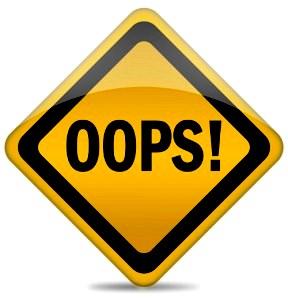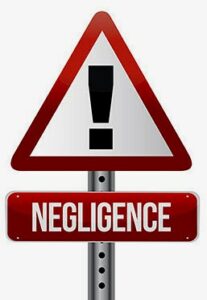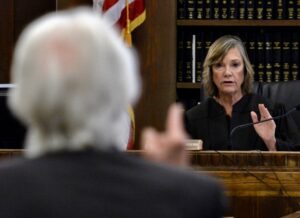
Many lay people have a basic understanding of what it means to assert that someone was negligent towards another. Dhillon v. Jaffer 2014 BCCA 215 had the following summary of some aspects of negligence
( 27) The first principle is causation. It need hardly be stated that a plaintiff in a negligence action must prove on a balance of probabilities that the defendant caused or contributed to the loss or injury of which he or she complains. In most cases, causation is established by applying the “but for” test, which requires the plaintiff to show that the loss or injury would not have occurred “but for” the defendant’s negligence. Where there are two or more tortfeasors, the defendant is not excused from liability merely because other “causal factors” for which he or she is not responsible also helped produce the harm. It is sufficient if the defendant’s negligence was a cause of the harm. (See generally Athey v. Leonati [1996] 3 S.C.R. 458 at paras. 13‑25; and see Blackwater v. Plint 2005 SCC 58 at paras. 78‑81; E.D.G. v. Hammer 2003 SCC 52 at paras. 31‑2; B.P.B. v. M.M.B. 2009 BCCA 365 at paras. 33-47 (Chiasson J.A.); Clements v. Clements 2012 SCC 32 at paras. 6‑28; and Hansen v. Sulyma 2013 BCCA 349 at paras. 21‑29; lve. to app. dism’d [2013] S.C.C.A. 390.)
[28] It is also trite law that where there is more than one tortfeasor who caused or contributed to the plaintiff’s harm or loss, each is fully liable to the plaintiff for the injury. The Negligence Act, R.S.B.C. 1996, c. 333 permits tortfeasors to seek contribution and indemnity from each other in accordance with their respective degrees of responsibility, but this does not affect their liability to the plaintiff. Where on the other hand the injuries or losses are divisible – i.e., “capable of being separated out and having their damages assessed independently” (see Bradley v. Groves 2010 BCCA 361 at para. 20; B.P.B. v. M.M.B. at para. 71) – each defendant need compensate the plaintiff only for the damages he or she actually caused. As stated by Chief Justice McLachlin in Blackwater:
Where a second wrongful act or contributory negligence of the plaintiff occurs after or along with the first wrongful act, yet another scenario, sometimes called the “crumbling skull” scenario, may arise. Each tortfeasor is entitled to have the consequences of the acts of the other tortfeasor taken into account. The defendant must compensate for the damages it actually caused but need not compensate for the debilitating effects of the other wrongful act that would have occurred anyway. This means that the damages of the tortfeasor may be reduced by reason of other contributing causes: Athey, at paras. 32-36. [At para. 80.]
This principle, the Chief Justice added, flows from the more basic notion that damages are intended to put the plaintiff in the position he or she would have been in “but for” the tort for which he or she is liable or, in other words, in his or her original position absent the defendant’s negligent act or omission. Again as stated in Athey:
… The essential purpose and most basic principle of tort law is that the plaintiff must be placed in the position he or she would have been in absent the defendant’s negligence (the “original position”). However, the plaintiff is not to be placed in a position better than his or her original one. It is therefore necessary not only to determine the plaintiff’s position after the tort but also to assess what the “original position” would have been. It is the difference between these positions, the “original position” and the “injured position”, which is the plaintiff’s loss. In the cases referred to above, the intervening event was unrelated to the tort and therefore affected the plaintiff’s “original position”. The net loss was therefore not as great as it might have otherwise seemed, so damages were reduced to reflect this.
. . .
The so-called “crumbling skull” rule simply recognizes that the pre-existing condition was inherent in the plaintiff’s “original position”. The defendant need not put the plaintiff in a position better than his or her original position. The defendant is liable for the injuries caused, even if they are extreme, but need not compensate the plaintiff for any debilitating effects of the pre-existing condition which the plaintiff would have experienced anyway. The defendant is liable for the additional damage but not the pre-existing damage: Cooper‑Stephenson, supra, at pp. 779-780 and John Munkman, Damages for Personal Injuries and Death (9th ed. 1993), at pp. 39-40. Likewise, if there is a measurable risk that the pre-existing condition would have detrimentally affected the plaintiff in the future, regardless of the defendant’s negligence, then this can be taken into account in reducing the overall award: Graham v. Rourke [(1990) 74 D.L.R. (4th) 1; Malec v. J. C. Hutton Proprietary Ltd. (1990) 169 C.L.R. 638]; Cooper-Stephenson, supra, at pp. 851-852. This is consistent with the general rule that the plaintiff must be returned to the position he would have been in, with all of its attendant risks and shortcomings, and not a better position. [At paras. 32, 35; emphasis by underlining added.]
[29] Inherent in and consistent with all of the foregoing is yet another well-known principle – the rule against double recovery. The history of this rule was discussed in Cuttell v. Bentz et al. [1985] 6 W.W.R. 193 by Mr. Justice Seaton at 198-202, who traced it as far back as 1584. The clearest statement of the rule he quoted is from the judgment of Lord Diplock in Mahesan S/O Thambiah v. Malaysia Govt. Officers’ Co‑op. Housing Soc. [1979] A.C. 374 (P.C.) at 382:
The House of Lords [in United Australia Ltd. v. Barclays Bank Ltd. [1941] A.C. 1] also held that where the same facts gave rise in law to a cause of action against one defendant for money had and received and to a separate cause of action for damages in tort against another defendant, judgment recovered against the first defendant did not prevent the plaintiff from suing the other defendant in a separate action: but that to the extent that that judgment was actually satisfied this constituted satisfaction pro tanto of the claim for damages in the cause of action against the second defendant. [Quoted in Cuttell at 200.]
Lambert J.A. in his concurring reasons in Cuttell distinguished between the “double satisfaction rule” and the principle of res judicata, which “prevents more than one action between the same parties about the same subject-matter.” Both doctrines, he noted, are based on the same foundation, namely, that “multiple actions create a potential for injustice through the possibility of different results on what is substantially the same issue.” (At 205.)




